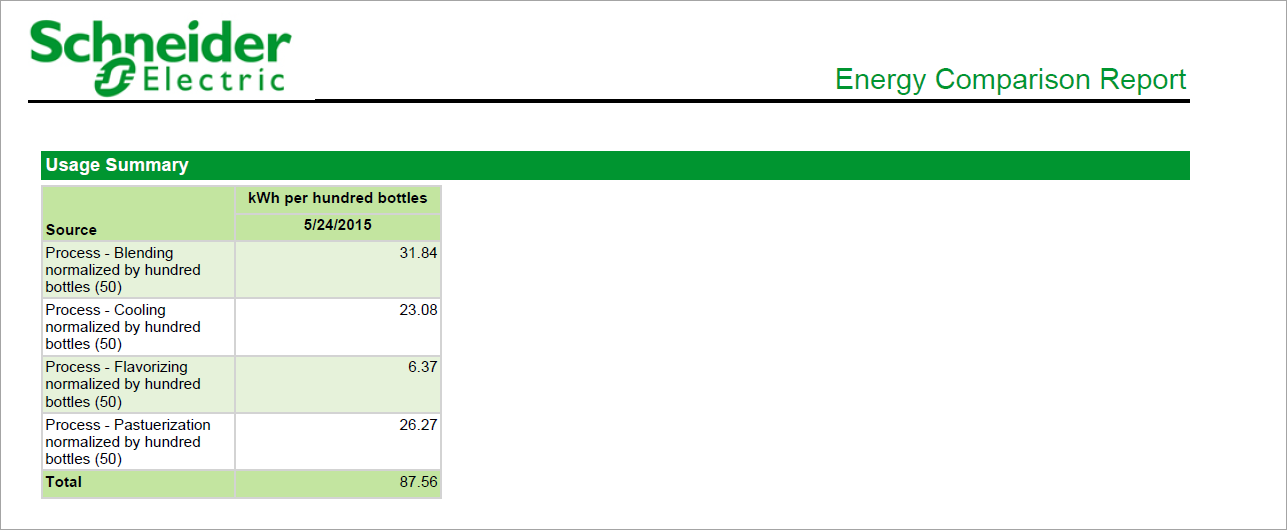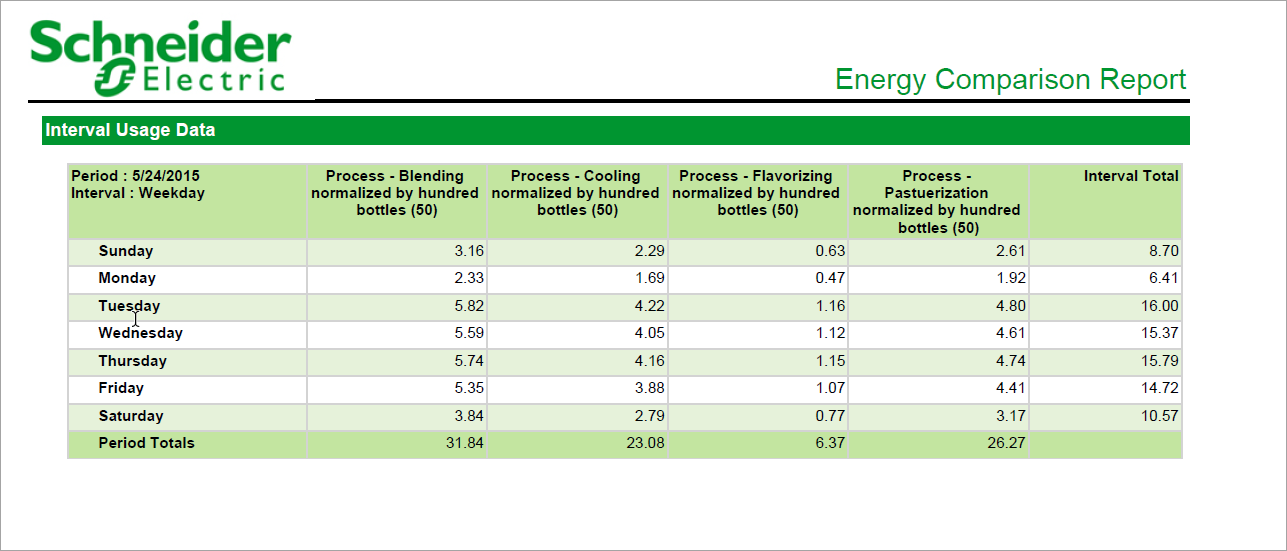Summary
The Energy Comparison Report converts different types of energy measurements to a common energy unit and then normalizes it by criteria, such as area. Use this report to benchmark building or process energy performance.
Prerequisites
- The measurement data must be available as historical data logs in the database.
Report inputs
Type a title for the report in the text box.
- Click Select Load Measurement to open the Load Measurement Selector dialog.
-
Under Load, click Select Source to open the Source Selector.
The Source Selector dialog provides options to show Devices or Views.
-
Use the Devices option to select the devices you want to include in the report.
From the Grouping list, select the way in which you want to display the sources (for example by device type or by group name). Click + and - to expand and collapse items in the navigation tree. Click the check box beside a device (or group of devices) to select it. Click Select All or Select None in the top-right corner to select or clear all the check boxes.
-
Use the Views option to select a hierarchy view (a tree of relationships) or virtual meters.
The hierarchy views and virtual meters are configured in the Hierarchy Manager component. (See the Hierarchy Manager Help for further information about hierarchies, virtual meters, and views.) Click + and - to expand and collapse items in the tree. Click the check box beside any hierarchy item in the tree or any virtual meter to select it.
- Click OK after making your selections.
-
- Under Measurements:
- Click Select Measurement to open the Measurement Selector.
- Choose the measurement you want to use for the energy comparison and click OK.
- If required, enter a Multiplier value.
The multiplier lets you add multiple measurements. For example, a multiplier can be used to get gas and electricity energy currencies onto the same unit footings, so they can be added together.
- (Optional) Use Normalization to normalize measurement values.
- In Label, enter the normalization label value.
- In Value, enter the value that you want to normalize.
For example: To normalize energy usage per square foot of a building, enter Energy per Square Foot in the Label value, and the square footage of the building in the Value field.
- Click OK.
Type a label to describe the measurements selected in Energy Measurements.
Use this label to aggregate disparate units into a common measurement unit.
For example, for Gas (GJ) and Electricity (kWh) values you could define the Energy Label as 'BTU'.
Select the aggregation time interval for the reporting data.
NOTE: This note is applicable for KPI report. For the selection of Hourly, Daily, Weekly, or Yearly value for Rollup parameter, the measurement values are always aggregated for the selected measurements based on the interval values. For non-cumulative measurements, it is recommended to select Interval value. For example, if Mean Current measurement is selected and the Rollup is set to Interval, the Mean Current measurements for the selected interval is displayed. If Rollup is set to Hourly, the Mean Current measurement values are displayed as aggregated values and not average values.
NOTE: Interval Rollup is available only for the following reports: KPI reports, Measurement aggregation export report, Measurement aggregation report and Multiple trend report.
Use this input to select the timeframe for the data you want to view in the report.
Select the reporting period from the dropdown list. The timeframe options in the timeframe dropdown are relative to the date the report is run. To run a report that starts and ends in the past, select the fixed date option. Type a start and end date in the date boxes or click the arrows beside the dates to display a pop-up calendar and select a date. Type a time in the time boxes or click the up and down arrows beside the time to adjust the hours or minutes up or down. You can also run a report that starts and ends in the future. You must manually add the future data. You can use any tool to generate future data. For example, use Manual Data Editor to manually enter measurement data.
Select the timezone you want to view timestamps in.
Select to show or not in the report the start and end periods. The default is No.
Select one of the available chart types from the dropdown list to graphically display the data that you specified for the report.
Select whether or not to scale the chart normally. Selecting No, sets the starting point of the Y-axis at zero. The default is Yes.
Select whether or not to show the data table in the generated report. The default is No.
Click Yes to include data warnings in the report. If there are none, the section is not included. Click No to exclude this section.
Example:



NOTE: This example only shows selected content from the report, it does not show the entire report.